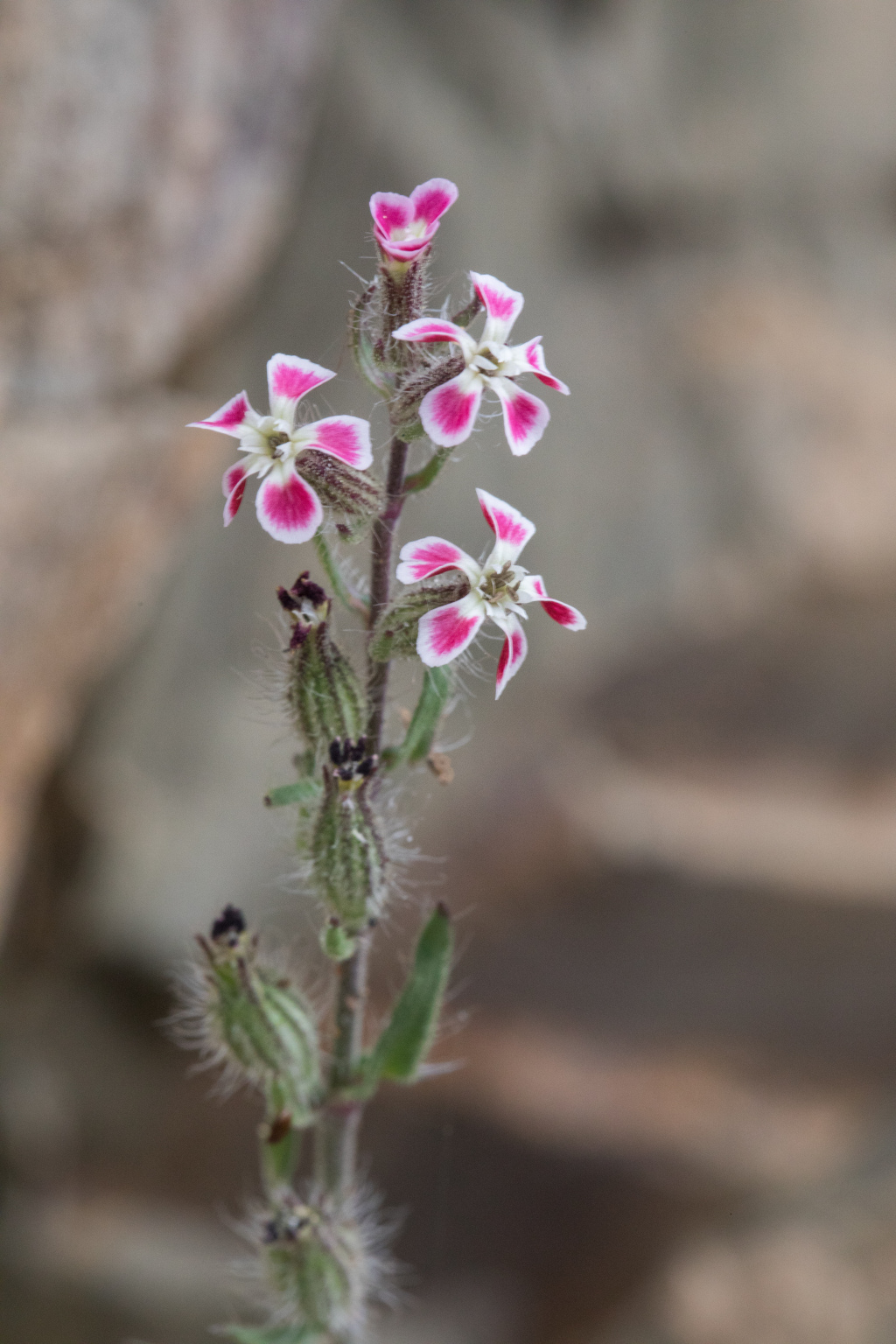Silene gallica
L.Annual; pubescent, glandular above. Stems erect, simple to much-branched, 15–45 cm long. Leaves hispid-pilose, 10–35 mm long, 1–10 mm wide, subobtuse; lower leaves oblong-spathulate with petioles to 10 mm long; upper leaves sessile, lanceolate. Inflorescence simple, racemose, 1–several-flowered; bracts herbaceous. Flowers bisexual; pedicels erect in fruit, to 1.5 times calyx length; calyx cylindric-ovoid, erect and larger in fruit, 7–10 mm long, 10-veined, glandular-pubescent, pilose on the veins, calyx-lobes a quarter calyx length, narrow-triangular to linear-lanceolate, acute; petal-limb to 5 mm long, entire to emarginate, white or pink, with or without dark crimson basal spot; styles 3. Capsule ovoid, 6–9 mm long; carpophore c. 1 mm long, more or less puberulent; seeds reniform, faces deeply concave, dark greyish-brown, bluntly tuberculate, 0.8–1.2 mm long.
LoM, MuM, Wim, GleP, Brid, VVP, VRiv, RobP, MuF, GipP, OtP, WaP, Gold, CVU, GGr, DunT, NIS, EGL, EGU, WPro, HSF, HNF, OtR, Strz, VAlp.
Widely naturalised in extra-tropical Australia, including 2 varieties native to southern and central Europe and western Asia. Flowers Sep.-Mar.
Adams, L.G. (1996). Caryophyllaceae. In: Walsh, N.G.; Entwisle, T.J., Flora of Victoria Vol. 3, Dicotyledons Winteraceae to Myrtaceae, pp. 228–271. Inkata Press, Melbourne.
 Spinning
Spinning




